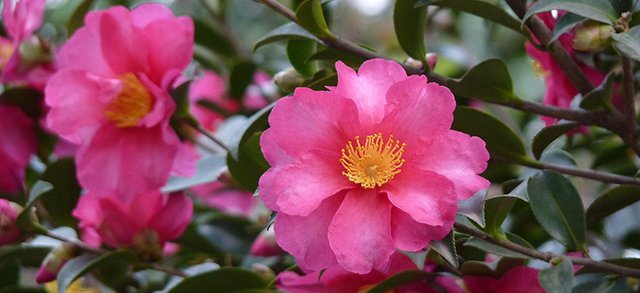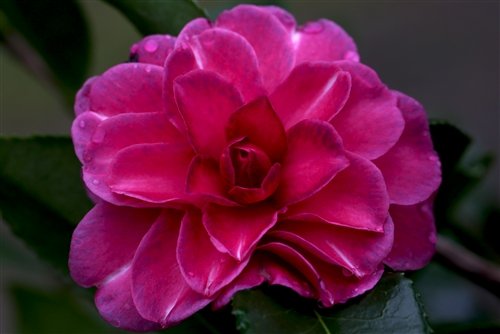
Camellia sasanqua, commonly known as sasanqua camellia, is a densely branched, pyramidal to oval-rounded, tree-like, evergreen shrub that typically grows to 6-10’ tall. It is native to Japan. It is ornamentally noted for its attractive dark green foliage and fall to early winter flowers. Lustrous, narrow-oval to obovate, dark green leaves (to 3” long) are cuneate and hairy on the midrib with rounded marginal teeth and pubescent petioles.

Stems (reddish when young) are covered with significant pubescence. White to pale pink, 6-8 petaled, mildly aromatic flowers (2-3” diameter), each having a central mass of bright yellow-anthered stamens, bloom late summer to early winter depending on local climate. Petals fall after several days but stamens remain, with additional flowers continuing to open in succession over a period of 4-6 weeks.

Flowers are followed by small rounded fruits. Species flowers are single, but cultivar flowers often come in single, semi-double or double-flowered forms, with flower colors ranging primarily from white to red. Fruit is a smooth and shiny capsule (to 3/4" long).

Genus name honors Georg Joseph Camel (1661-1706), a German Jesuit missionary to the Philippines who was noted for his work on Oriental plants.
Specific epithet comes from the Japanese name sasankua for a popular native species of Camellia.

You have shared with one other ,the Fav. comment Award for your comment and it's great pics and info. Well done !